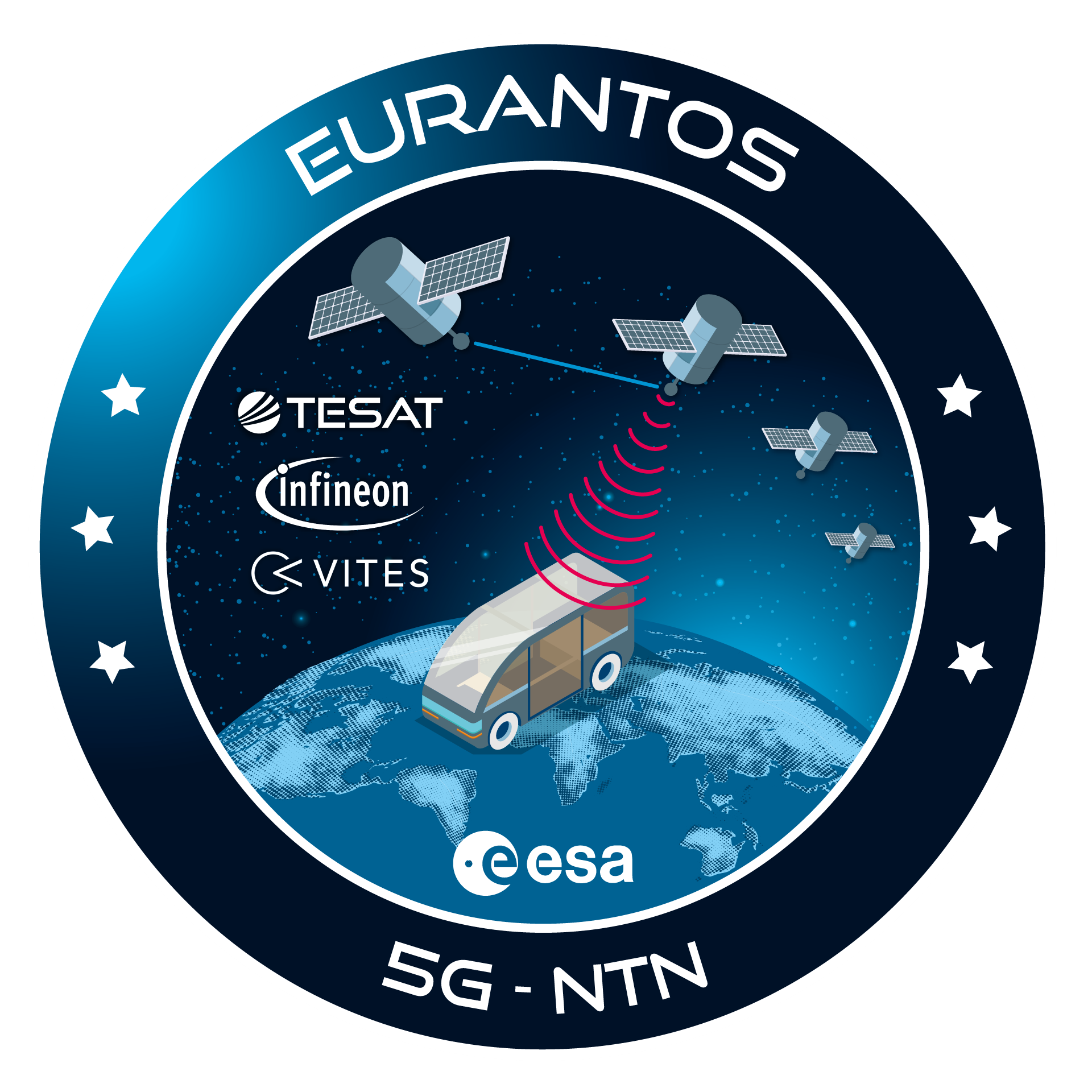
-
StatusOngoing
-
Status date2025-04-17
-
Activity Code5C.523
The objective of the proposed activity is to develop European Radio-Frequency (RF) antenna semiconductor components in ground and space applications for satellite constellations in Ka-Band.
Receive (RX) and Transmit (TX) beam-forming front-end modules (BFEM = Radio-Frequency Integrated Circuit (RFIC) + Package) are designed for both the ground/terrestrial (single beam) and the space-segment (dual beam) to support either TX or RX antenna applications. TX and RX dedicated BFEMs are intended to offer a low complexity and price optimized solution to active antennas systems targeting an application scenario, which is being discussed in the context of 5G non-terrestrial networks.
For upcoming Non-Geostationary Orbit (NGSO)-satellite constellations, the use of the 5G-non-terrestrial-network standard is considered in order to allow seamless handover between the terrestrial 5G and the satellite networks using 5G non-terrestrial networks.
Bit Field Embedded Microcontroller (BFEM) - antenna interface: The co-engineering between BFEM and the antenna element will have crucial influence on the performance of the system. Assembly tolerances yielding to antenna impedance matching variations needs to be investigated in detail to prove a repeatable performance.
Channel-to-channel and port-to-port isolation: Due to the small package, port-to-port isolation requires additional care which will be taken into account during design phase.
The proposed BFEMs integrated circuits rely on an European silicon-germanium (SiGe) Bipolar CMOS (BiCMOS) technology. This technology has several advantages compared to other technologies, including similar RF performance with advantageous noise and power characteristics at less advanced nodes. This enables a competitive edge to be gained in terms of cost
Space-gateway BFEM functions:
- Support of two linear/circular-polarised antenna beams
- Radiation hard design
Ground-BFEM functions:
- Support of one linear/circular-polarized antenna beams
General functions and features:
- Polarisation control to realize either linear or left-/right-hand circular polarised radiation
- Co-engineering in between BFEM and antenna interface to optimise impedance matching and reduce losses
- Integrated up-/down conversion
- Digital control of the BFEM
A topology with four TX and/or four RX antenna ports is ideal to achieve an optimal printed circuit board (PCB) layout in term of RF signal losses minimisation and an optimal BFEM integrated circuit power consumption. In addition, the thermal gradients are more evenly distributed over the antenna surface, making the cooling easier and thus preventing hot spots. All BFEMs include up- and down-conversion to simplify the routing for the Intermediate Frequency signals.
The Radio-Frequency Integrated Circuit (RFIC) will be integrated in a ball grid type array package to improve the PCB routability and handling.
The project is split into two phases of in total 36 months of project duration. In both phases a wafer processing and packaging is performed and complemented by an Antenna Demonstrator to test the BFEM functionalities.
The first phase is divided into the following milestones:
- System Requirements Review (SRR)
- Preliminary Design Review (PDR)
- Critical Design Review (CDR)
- Test Readiness Review (TRR)
- Test Review Board (TRB)
The second phase integrates the findings of the first phase into an updated design and is divided into the following milestones:
- Critical Design Review (CDR2)
- Test Readiness Review (TRR2)
- Test Review Board (TRB2)
- Final Review (FR)
The first phase of the project started in February 2025 and is ongoing according to schedule. SRR is currently in progress.






